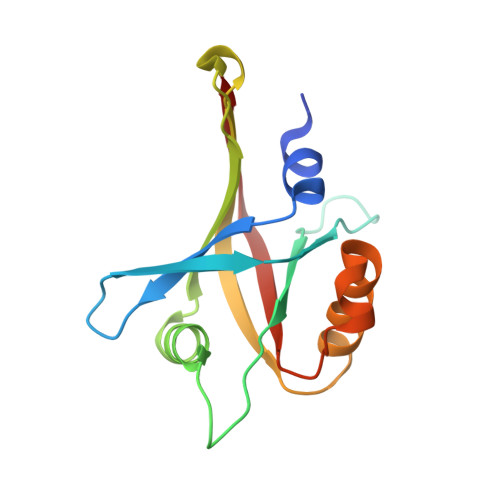Sequence-Structure-Function Classification of a Catalytically Diverse Oxidoreductase Superfamily in Mycobacteria.
Ahmed, F.H., Carr, P.D., Lee, B.M., Afriat-Jurnou, L., Mohamed, A.E., Hong, N.S., Flanagan, J., Taylor, M.C., Greening, C., Jackson, C.J.(2015) J Mol Biol 427: 3554-3571
- PubMed: 26434506
- DOI: https://doi.org/10.1016/j.jmb.2015.09.021
- Primary Citation of Related Structures:
4Y9I, 4YBN, 4ZKY, 5BNC - PubMed Abstract:
The deazaflavin cofactor F420 enhances the persistence of mycobacteria during hypoxia, oxidative stress, and antibiotic treatment. However, the identities and functions of the mycobacterial enzymes that utilize F420 under these conditions have yet to be resolved. In this work, we used sequence similarity networks to analyze the distribution of the largest F420-dependent protein family in mycobacteria. We show that these enzymes are part of a larger split β-barrel enzyme superfamily (flavin/deazaflavin oxidoreductases, FDORs) that include previously characterized pyridoxamine/pyridoxine-5'-phosphate oxidases and heme oxygenases. We show that these proteins variously utilize F420, flavin mononucleotide, flavin adenine dinucleotide, and heme cofactors. Functional annotation using phylogenetic, structural, and spectroscopic methods revealed their involvement in heme degradation, biliverdin reduction, fatty acid modification, and quinone reduction. Four novel crystal structures show that plasticity in substrate binding pockets and modifications to cofactor binding motifs enabled FDORs to carry out a variety of functions. This systematic classification and analysis provides a framework for further functional analysis of the roles of FDORs in mycobacterial pathogenesis and persistence.
Organizational Affiliation:
Australian National University Research School of Chemistry, Sullivans Creek Road, Acton, ACT 2601, Australia.

















